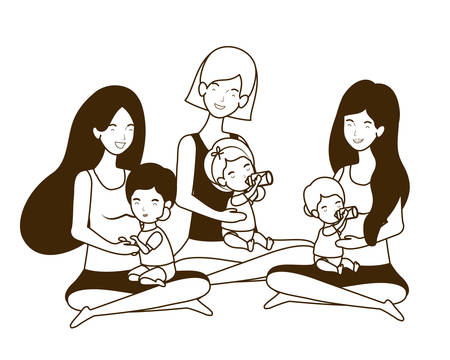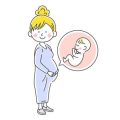Recognising Burns and Scalds in Children
When caring for children, recognising burns and scalds quickly is vital for both immediate response and long-term recovery. In the UK, many childhood burns happen at home or during play, often when least expected. Understanding the common causes and learning how to assess the severity can help you act promptly and confidently.
Common Causes of Burns and Scalds in UK Family Life
| Cause | Example in Daily Life |
|---|---|
| Hot Drinks | A cup of tea left on a low table; a toddler pulling it down |
| Cooking Accidents | A child reaching for a boiling kettle or saucepan handle on the hob |
| Bath Water | Running a bath that’s too hot before checking the temperature |
| Radiators & Fires | Touching hot radiators, heated towel rails, or open fires in winter |
| Ironing & Hair Styling Tools | Exploring an unattended iron or hair straightener left switched on |
| Chemical Burns | Contact with cleaning products stored under the sink or in low cupboards |
Assessing Severity: What to Look For
The first step after any burn is to assess how deep and extensive it is. This determines whether you can treat it at home or need to seek medical attention. Here are key signs:
- Superficial (First-degree): Red, painful skin without blisters – like mild sunburn.
- Partial Thickness (Second-degree): Blistered, very red, swollen, moist-looking skin.
- Full Thickness (Third-degree): White, charred or leathery skin; sensation may be reduced due to nerve damage.
- Size: If the burn covers a large area (bigger than the size of your child’s hand), or is on the face, hands, feet, joints or genitals – seek emergency help.
- Location: Burns around the mouth or nose may affect breathing and are always serious.
The Emotional Impact: A Parent’s Perspective
Beyond the physical injury, witnessing your child in pain can be deeply distressing. Children may also feel frightened or confused by their injury. Recognising these emotional responses is just as important as treating the wound itself. Offering comfort, reassurance, and gentle explanations helps build trust and resilience as you respond together to the situation.
Immediate First Aid Steps
When your child experiences a burn or scald, your immediate actions can make all the difference in reducing pain, minimising damage, and preventing complications. Following NHS guidelines, here’s a clear step-by-step approach for parents and caregivers to follow during those crucial first moments:
Step-by-Step Guide to Burn and Scald First Aid
| Step | Action | Important Notes |
|---|---|---|
| 1. Remove from Danger | Move your child away from the source of heat or hot liquid immediately. | Ensure your own safety before helping your child. |
| 2. Cool the Burn | Hold the affected area under cool running water for at least 20 minutes. | Do not use ice, creams, or greasy substances like butter. |
| 3. Remove Clothing and Jewellery | Carefully take off any clothing or jewellery near the burn unless it is stuck to the skin. | This prevents further heat retention and swelling. |
| 4. Cover the Burn | Loosely cover the area with cling film (plastic wrap) or a clean, non-fluffy cloth. | This helps protect against infection while awaiting medical attention. |
| 5. Comfort and Reassure | Offer comfort and reassurance; keep your child warm but avoid overheating the burned area. | This supports emotional wellbeing during a frightening experience. |
| 6. Seek Medical Advice | If the burn is large, deep, on the face/hands/feet/genitals, or if you are concerned, call 999 or visit A&E promptly. | The NHS advises erring on the side of caution with children’s burns. |
What Not to Do
- Do not: Pop blisters, as this increases infection risk.
- Avoid: Applying toothpaste, butter, or any home remedies—stick to cool running water only.
- Never: Use ice directly on the skin as this can cause further damage.
The Importance of Calm Parental Response
Your calmness sets the tone for your child’s recovery—both physically and emotionally. By following these steps methodically, you not only reduce injury severity but also help your child feel safe and cared for during a distressing event. Always remember: prompt action paired with gentle reassurance is key in managing childhood burns and scalds effectively within UK households.

3. When to Seek Medical Help
Understanding when a burn or scald needs professional medical attention is crucial for every parent and carer. In the UK, knowing how to navigate local healthcare services—whether it’s calling 999, heading to A&E, or booking a GP appointment—can make all the difference in your child’s recovery.
Judging the Seriousness of a Burn or Scald
Burns and scalds vary in severity, and your response should be tailored accordingly. The following table provides guidance on common signs and the recommended action:
| Severity/Sign | What to Do |
|---|---|
| Minor (small, superficial, not blistered) | Treat at home; monitor closely. Consult your pharmacist or GP if concerned. |
| Blistering, white or charred skin, or burns larger than the child’s palm | Visit A&E as soon as possible. |
| Burns to face, hands, feet, joints, genitals, or over major joints | Go directly to A&E for specialist care. |
| Any electrical or chemical burn | Call 999 immediately. |
| Signs of shock (pale, clammy skin, rapid breathing), difficulty breathing, or unconsciousness | Call 999 without delay. |
When to Call 999
- The burn is deep, covering a large area or involves the face, hands, feet, joints, or genitals.
- Your child shows signs of shock or has difficulty breathing.
- The injury is due to chemicals or electricity.
- Your child becomes unresponsive.
When to Visit A&E (Accident & Emergency)
- The burn is larger than your child’s palm—even if not deep.
- There are blisters present—especially on sensitive areas such as the face or hands.
- You’re unsure about the severity but are worried about your child’s pain or discomfort.
When to Consult Your GP
- The burn seems minor but isn’t healing after a few days.
- You have concerns about infection (e.g., redness spreading, pus).
- Your child’s tetanus vaccinations may not be up to date.
Remember: It’s always better to err on the side of caution. Trust your instincts as a parent—if you feel something isn’t right with your child after a burn or scald, seek professional help promptly through the NHS services available in your area.
4. Support and Comfort for Your Child
When a child experiences a burn or scald, the physical pain is often accompanied by emotional distress. As parents and carers, offering both immediate and ongoing emotional support is crucial in helping your child recover and feel secure. Below are strategies to provide reassurance, foster open communication, and maintain trust throughout the healing journey.
Providing Emotional Reassurance
Children may feel frightened, guilty, or anxious after a burn incident. Your response can make a significant difference in their emotional recovery. Use calm, gentle language and reassure them that you are there to help. Explain what is happening in simple terms they can understand. A soothing presence helps your child feel safe and understood.
Key Ways to Offer Comfort
| Strategy | Description |
|---|---|
| Physical Affection | Offer cuddles or hold their hand if it does not hurt the injured area, showing warmth and closeness. |
| Calm Communication | Speak softly and clearly; avoid showing panic as children pick up on adult emotions. |
| Distraction Techniques | Read a favourite story, play gentle music, or engage in quiet play to take their mind off discomfort. |
| Positive Reinforcement | Praise your child for being brave during treatment or when discussing their feelings. |
Encouraging Open Communication
After the initial shock subsides, encourage your child to express their thoughts and feelings. Ask open-ended questions such as “How are you feeling now?” or “Is there anything youd like to talk about?” Let them know its okay to be upset or scared. Listening without judgement builds confidence and trust, helping your child process the experience healthily.
Maintaining Trust During Recovery
The way you interact with your child during wound care and follow-up appointments can impact their sense of security. Keep promises—if you say something will only take a moment, do your best to stick to it. Prepare them in advance for dressing changes or medical visits, explaining each step as simply as possible. This transparency reduces anxiety and fosters trust.
Cultural Note: British Parenting Approaches
In British culture, there is an emphasis on resilience balanced with empathy. Encourage your child’s independence where appropriate but always remain available for comfort. Using familiar routines—like a bedtime story or a favourite snack—can restore normality amidst disruption. Remember, seeking support from school nurses or local NHS services is encouraged in the UK; don’t hesitate to reach out if your child appears withdrawn or unusually anxious after the incident.
5. Long-term Care and Recovery
Supporting a child after a burn or scald goes far beyond the initial emergency response. The days, weeks, and sometimes months that follow are crucial for both physical healing and emotional well-being. Here’s what parents and carers in the UK should know about effective long-term care:
Wound Care at Home
Proper wound management is essential to prevent complications and ensure optimal recovery. Always follow the advice given by your local GP or hospital team. Key steps include keeping the wound clean, changing dressings as advised, and monitoring for signs of infection. The table below outlines typical home care recommendations:
| Aspect of Wound Care | Advice |
|---|---|
| Cleaning | Gently clean with cool, boiled water or saline solution. |
| Dressing Changes | Change as recommended; avoid touching the wound directly. |
| Pain Relief | Use paracetamol or ibuprofen as directed by your healthcare provider. |
| Sun Protection | Keep healing skin covered and use high SPF if outdoors. |
Reducing Infection Risk
Bacterial infections can complicate healing. Encourage handwashing before dressing changes, avoid swimming pools until fully healed, and discourage scratching. If you notice redness spreading, pus, fever, or increasing pain, contact your GP promptly.
Psychological Healing: Supporting Your Child Emotionally
A burn injury can be frightening for both children and parents. Children may feel anxious about their appearance or fearful of certain situations (like hot water). Maintain open communication, reassure them about the healing process, and encourage questions. Sometimes, it helps to involve school staff or friends in understanding your child’s needs during recovery.
When to Seek Further Medical Attention?
- The wound isn’t healing or appears worse after several days.
- Your child develops a fever or becomes generally unwell.
- You notice any new blisters, swelling, or discharge from the wound.
- Your child experiences persistent pain despite pain relief.
- You’re worried about their emotional state (e.g., nightmares, withdrawal).
The Role of Follow-up Appointments
NHS services often provide follow-up clinics to monitor progress and offer advice on scar management. Attending these appointments ensures your child receives ongoing support tailored to their needs—both physically and emotionally. Remember: gentle encouragement, patience, and a listening ear go a long way in helping your child recover from burns or scalds.
6. Preventing Future Accidents
Burns and scalds can happen in the blink of an eye, but many accidents are preventable with a few practical steps at home and by nurturing safety awareness in children. In the context of British homes, where hot drinks, kettles, radiators, and baths pose everyday risks, prevention is always better than cure.
Making Your Home Safer: Practical Tips
| Area | Risk | Safety Tip |
|---|---|---|
| Kitchen | Hot pans, boiling kettles, oven doors | Keep handles turned inwards; use hob guards; never leave children unattended while cooking. |
| Bathroom | Hot water from taps or baths | Fit thermostatic mixing valves; check bathwater temperature before placing a child in the bath (aim for 37-38°C). |
| Living Room | Hot drinks, candles, fireplaces | Place hot drinks out of reach; use fireguards on open fires; never leave burning candles unattended. |
| General Home | Heaters, irons, hair straighteners | Unplug and store appliances safely after use; keep cords out of reach. |
Building Children’s Awareness of Hazards
Children learn best through experience and conversation. Engage them in age-appropriate discussions about what is hot and why it can be dangerous. Use daily routines—like making tea or running a bath—as gentle teaching moments. Encourage questions and model safe behaviour so children see safety as a family value rather than just a rule.
The “Stop, Look, Think” Approach:
- Stop: Before touching or going near anything potentially hot, pause together.
- Look: Identify what could be hot—kettles, mugs, radiators, etc.
- Think: Discuss what might happen if they touch or spill something hot and how to avoid accidents.
Nurturing Safety-Conscious Habits as a Family
Create family routines around safety checks—for example, checking water temperature together before bath time or tidying up cords after using appliances. Praise your child when they remember safety steps on their own to build confidence and reinforce positive habits. By making safety part of everyday family life and not just a set of rules to follow, you help your child grow into an aware and responsible individual who feels secure exploring their world safely.


